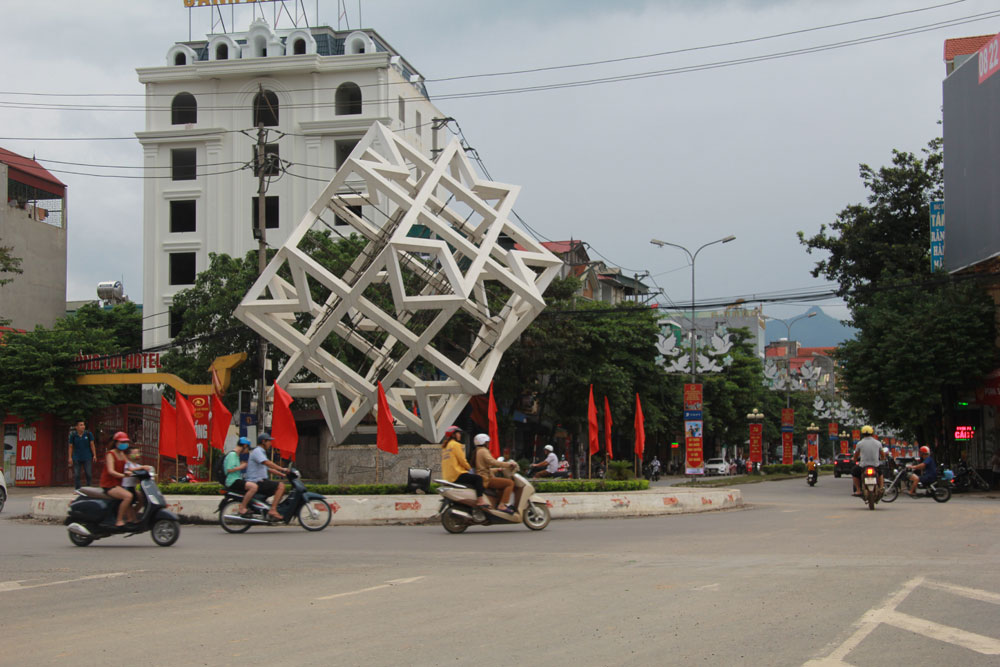



In the time to come, the province will strive to upgrade Hoa Binh city to a tier-2 urban area.
In the beginning of the 20015-2020 tenure, the urbanisation ratio of Hoa Binh was 14.53 percent. The 16th provincial Party Congress set a target of 25 percent in the end of the tenure. In late 2018, the ratio reached only 20.97 percent. The provincial Party Committee held that this was one of the five targets that were hard to be completed.
According to Nguyen Van Mao, head of the Office for Urban Development and Technical Infrastructure under the provincial Department of Construction, the low starting point was one of the major reasons behind the slow urganisation of the province.
Hoa Binh is a mountainous locality with urban areas mostly located along national highways, and limited ground area for urban development. Due to low population density, trade and service sectors of the province mostly serve local residents, leading to a lack of motivation for important sectors. Excepting for Hoa Binh city, the province has yet to develop new residential and urban areas. The urban areas mostly operate with the function of administrative areas, he said.
In this situation, the provincial Party Committee issued Plan No. 237-KH/TU on September 16, 2019 on the implementation of the five tough targets. For the target in urbanisation, the provincial People’s Committee assigned specific tasks to each department, agency and locality, with focus on organising district and communal-level administrative units and implementing urban development plans and programmes as well as upgrading Hoa Binh city and Luong Son township.
On this foundation, the provincial Department of Construction designed and submitted to the provincial People’s Committee a programme on urban development in Hoa Binh for the 2016-2020 period with orientations to 2030, and Plan No. 55/KH-UBND dated April 19, 2018 on the implementation of the Hoa Binh urban development to 2020.
Alongside, the department also coordinated with the Luong Son district People’s Committee to build a project to propose the Ministry of Construction recognize Luong Son township and expanded areas as tier-4 urban areas.
As a result, on November 20, 2019, the Ministry of Construction issued Decision 986/QD-BXD on the recognition of Luong Son township and expanded areas as tier-4 urban areas, contributing to developing the expanded urban areas as well as economic development of the province, raising the urbanisation ratio to the target set in by the 16th provincial Party Congress’ resolution.
At the same time, the Department of Construction was assigned to coordinate with the Department of Home Affairs to evaluate the merging of Ky Son district into Hoa Binh city and give advice to the provincial People’s Committee on criteria of infrastructure for three wards of Dam Chu, Thong Nhat and Ky Son.
On December 17, 2019, the National Assembly Standing Committee issued Resolution No. 830/NQ-UBTVQH14 on the re-arrangement of Hoa Binh’s communal and district-level administrative units, thus raising the urban population.
Thanks to the efforts, in June 2020, the urbanisation ratio of Hoa Binh increased to 28.69 percent, 14.16 percent higher than that in the beginning of the tenure, exceeding the target by 114.76 percent.
With the engagement of the whole political system, the province completed and surpassed the urbanisation goal. This is an important motivation for the locality’s socio-economic development.
In order to speed up urbanisation towards the target of 38 percent in urbanisation rate in 2025, the Department of Construction highlighted the need to design a programme on Hoa Binh’s urban development in the 2020-25 period with a vision to 2035 on the basis of the approved provincial planning to 2050.
Hoa Binh city will strive to become a tier-2 urban area, while Luong Son district will work to complete criteria to gain the status of town-level administrative unit, Mai Chau to become a township and surrounding communes to tier-4 urban area standard. Phong Phu township will be upgraded to tier-4 urban area, while the expanded townships are expected to become tier-5 urban areas.
To this end, the department gave a number of solutions such as enhancing the quality of urban planning, boosting investment promotion, developing the property market, and urban development though large-scale projects and programmes, along with solutions in mechanisms and policies./.